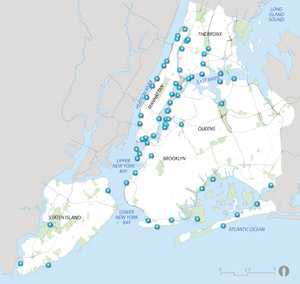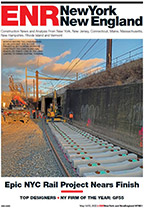New York City officials announced today the first citywide plan for the waterfront in almost two decades and one that aims to reconnect New Yorkers with the waterfront.


Dubbed the Waterfront Vision and Enhancement Strategy, it consists of a two-component, three-year plan, led by the Department of City Planning. The first component includes 130 funded projects that will create 13,000 construction jobs and 3,400 permanent jobs through the development of more than 50 acres of new waterfront parks, the creation of 14 new waterfront esplanades and a new commuter ferry service that will provide a new transit option between Brooklyn, Queens and Manhattan by way of the East River.
The second component, called Vision 2020, is the first comprehensive plan for city’s waterways and provides a blueprint of the city’s 520 miles of shoreline. Water quality is a major push in the new plan, which calls for $1.6 billion for upgrades to wastewater treatment plants.
Mayor Michael Bloomberg, City Council Speaker Christine Quinn and other city officials announced the plan today at Brooklyn Bridge Park.
“New York City’s waterways have played a major role in its history and remains one of the city’s greatest assets, but over time it has become less and less a part of New Yorkers lives,” said Deputy Mayor Robert Steel. “We’re committed to making it a part of New Yorkers’ lives again for recreation, transportation, jobs and housing.”
The waterfront plan was developed following a year-long public process that engaged New Yorkers from all five boroughs through workshops and online submissions. It currently includes city, state and federal agencies, waterfront experts and advocates, and revolves around eight main goals including the expansion of public access to the waterfront, the promotion of water-borne transportation and recreation, the support of the working waterfront, enlivening the waterfront, restoring the natural waterfront and protecting the city’s wetlands and shorefront habitats, improving water quality and government oversight and increasing climate resilience to help better withstand storms and flooding. The implementation of NYHarborWay, which aims to promote New York Harbor as a major recreational destination, is also part of the new waterfront plan.
According to Environmental Protection Commissioner Cas Holloway, the city’s waterways are the healthiest they have been in a century which will enable the creation of a vibrant waterfront transformation. More than $7 billion has already been invested into maintaining the health of the New York Harbor and billions more are expected to be invested in the coming years to continue that progress, Holloway said.

